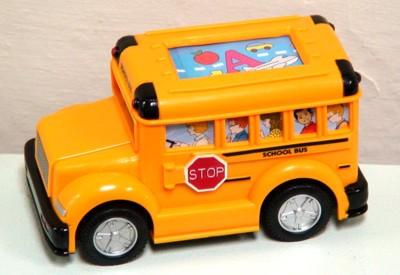Everyone from doctors to unemployed factory workers have come to him at one time or another, heads full of plans and hearts full of hope. They bring whimsical gadgets and serious objects, things as frivolous as water spewing hand puppets and as somber as coverings for prosthetic limbs. What they have in common is the desire to come up with that one invention that will make them rich, or famous. Or simply enable them to quit their 9-to-5 lives.
“This is a very personal business,” said Mr. Ahlert, 49. “I hear people’s hopes and dreams. Some people see inventing as a way to escape a life they’re not happy in. For others it’s a creative outlet. I try to be realistic with each person, to give a fair assessment of his or her idea and tell them what I think the chances are for success.
“Often, I find I’m trying to help people believe in themselves. Most people are afraid to take risks, they’ll back off. I explained, if you’re really committed, you’ll find a way to do it.”
People approach Mr. Ahlert with everything from ephemeral concepts to detailed plans. Generally, someone calls for an appointment to discuss an idea, and he meets with the inventor to assess the feasibility of the proposed object. Although cute and gimmicky things are tempting, he said, he ultimately looks for staying power – “The general rule of thumb is, find a need and fill it,” he said.
The inventor then either makes his own prototype or takes his plans to a prototype company. This can cost next to nothing or several thousand dollars; Mr. Ahlert often has to give financial advice along with psychological encouragement. “Someone might think nothing of indulging himself in a vacation or expensive restaurant meal, but would be afraid of investing in themselves,” he said. “People have a fear of failure. I try to help them through that fear – sometimes I’ll suggest getting a part-time job, borrowing money, anything to make their invention a reality.”
When the prototype is completed, Patrick J. Walsh, a patent attorney who works with The Creative Group, conducts a patent search. Once an object has received a patent-pending status, Mr. Ahlert uses his extensive connections to get it licensed and marketed by a manufacturing company. In a licensing agreement, the inventor gets royalties from the manufacturing company and the Creative Group takes a percentage of those royalties. This arrangement, Mr. Ahlert said, is unusual: most licensing companies ask for a fee from the inventor up front which, he said, can lead to “scam operations, which prey on would-be inventors.”
Of the several hundred ideas Mr. Ahlert hears about each year, about 30 make it to the licensing phase, he said. Yet it is the very riskiness of the business that appeals to him. “You could make a lot of money, and you can lose a lot of money,” he said. “I’ve had people denigrate me – they say why don’t you get a real job – but I tell them that what I do is creative and exciting.”
Perhaps because he is drawn to variety, Mr. Ahlert’s company specializes in two disparate fields, medical equipment and toys. (He and his partner in the toy division, Richard Blank of United States Consumer Products, are about to start a subsidiary toy company.) Among the most successful medical devices have been the prosthetic covering, invented by a man whose own leg had been amputated, and a peroxide-baking soda toothpaste and a tampon created by a gynecologist in California.
Toys include Baby Bigfoot, a shaggy ape-like doll that comes with a little printed account of the imaginary creature’s origins; Moose Shades – foam-rubber moose ears attached to sunglasses; and the Fizz System, a high powered water gun with a still secret mechanism.
On a recent day, Mr. Ahlert, a genial man with a mischievous grin, stood over the sink in his Stamford office and loaded the foot long Fizz System gun. Then he led a visitor into the hallway, took aim and ejected a strong stream of bubbly water.
When he is not helping others take creations from concept to marketplace, he is inventing his own objects. Among his favorites: Lifty Label, which scrapes stubborn sticky price tags off newly bought items, and Mutant Body Parts. These are candy fingers, ears and eyeballs, each packed in its own little plastic “body bag;” take a bite and red, edible “blood” oozes. “Kids truly adore disgusting, grotesque things,” he noted.
Mr. Ahlert’s childhood was filled not with inventions but music. His grandfather was Fred E. Ahlert, who wrote “I’ll Get By,” “I’m Gonna Sit Right Down and Write Myself a Letter,” and “Mean to Me,” among other classics. His father was Richard Ahlert, who wrote music for Tony Bennett and Frank Sinatra. He grew up in Scarsdale, went to Ithaca College and produced concerts, worked as a freelance writer and entrepreneur before opening the Creative Group five years ago.
“I saw a need for a business where inventors could take their ideas and have them evaluated honestly by someone who understands them,” he said. “Our society tends to look down on inventors – unless of course they’re already successful. It’s sad, but people laugh at new ideas until they are proven. I strongly believe that is wrong. My job is not only to deal with new inventions but to help people believe in themselves.”


